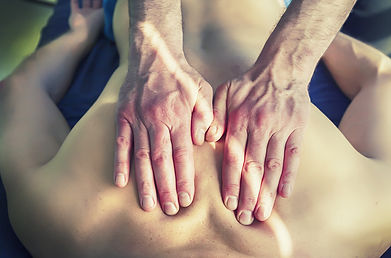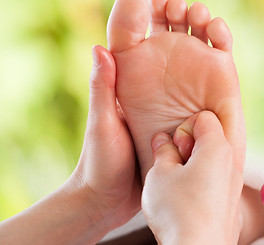Reflexology
The healing art of reflexology, is known by many thousands of years. It was first practised by Egyptian and Chinese people.
In 1913, an American surgeon Dr. William Fitzgerald who was an Ear, Nose, and Throat (ENT) surgeon became the first modern day pioneer and introduced this therapy to the west. He divided the body into 10 zones ending in finger and toes. The is what we known today as Reflexology.
Congestion or tension in any part of the body, mirrors congestion or tension in a related part of the body.
The reflexology takes into consideration a person's physical, emotional & spiritual state, lifestyles, patterns, diet & exercise, family, social & work environments when making a diagnosis. Because of this in-depth analysis, each consultant is totally individual to the needs of each person.

Being healthy means feeling well on an emotional, physical and spiritual level. When we become ill one or more of these aspects of ourselves goes out of balance.
Reflexology/massage does not interfere with conventional medicine and des not interact with medication prescribed by your doctor. So its an ideal compliment to conventional medicine.
How does Reflexology work?

Everybody has the ability to heal itself. Following illness, stress, injury or disease, the body is in state of imbalance. Reflexology can be used to restore and maintain the body’s natural balance.
A trained reflexologist applies gentle hand pressure to specific areas. gTrained hands cab detect tiny deposits and tensions in the feet, which block vital energy pathways, resulting in illness, This promotes deep reflexology in the corresponding parts of the body and establishes the equilibrium necessary for normal healing power.
